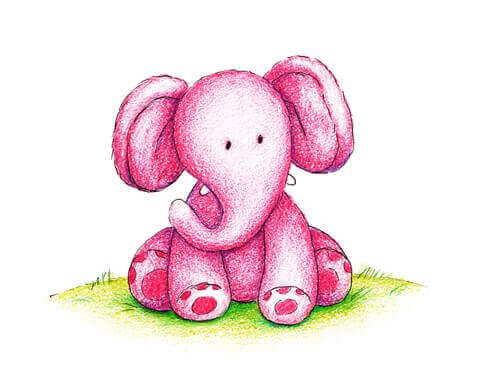4 Fun Breathing Exercises For Children


Written and verified by the psychologist Valeria Sabater
Breathing exercises for children are as useful as they are beneficial. Not only do they help children to control their emotions better but they also improve their attention span and focus. Breathing exercises also help children to feel more relaxed because they can understand their body better, and they can even help improve their pronunciation and way of communicating.
At first glance, this may seem rather silly to some. Don’t children arrive in the world already knowing how to breathe? Of course they do. The biomechanics of inhaling and exhaling are automatic processes which we all do and that no-one has ever had to teach us. However, the question that should lead us to a simple reflection is: we all know how to breathe, but, do we do it well?
“Breathing exercises optimize children’s brain development to improve their concentration and reduce the effects of stress”.
-Daniel Goleman-
The answer is no. We don’t always breathe in the right way. To start with, a more than obvious fact is that we don’t make use of our whole lung capacity and we forget that we also have a diaphragm which can marvellously optimize this whole process. Also, another fact that we mustn’t forget is that in general we breathe very quickly; we take in little air with each inhale and this makes us breathe more often and out of rhythm.
All this translates into tiredness, frequent headaches and the impact of stress and anxiety on the body. Furthermore, in relation to babies, there is another curious fact to consider. When a child arrives in the world, they breathe correctly – deeply and using the diaphragm. However, as they grow, whether due to posture or lifestyle, they gradually lose this natural ability.
For this reason, using games to teach children how to breathe “well” will enable them to recover this forgotten ability and so improve their quality of life.

Breathing exercises for children
Daniel Goleman once explained in an article how beneficial breathing exercises can be for children. He gave the example of a small school in Harlem, New York, and how a teacher had introduced the dynamic of “friends that breathe” into classrooms.
Each morning, before starting classes, all the small children between 5 and 6 years of age laid on a mat with a little teddy bear on their stomachs. They had to breathe in for 3 seconds and watch how their favorite toy lifted up. Then they breathed out deeply and started again.
This game lasted for little more than 5 minutes, however what Daniel Goleman saw was that its effects were truly beneficial. This exercise strengthened the brain circuits of the children to improve their processes of concentration and emotional management. The children who had already spent more than 2 years practicing these morning breathing sessions showed fewer attention problems and less hyperactivity as well as greater willingness to study and learn.
As we can see, something as simple and basic as dedicating a small break in the day to this series of breathing exercises can positively impact on children’s development and abilities. It’s worth trying. Let’s have a look at some of the techniques:
1. The snake game
Simple, fun and effective. The snake game is a favorite among little children and consists of the following:
- Have the children sitting in chairs and tell them to sit with their backs straight.
- Tell them to put their hands on their abdomen and focus on the instructions they’re going to hear.
- Then, they need to breathe in deeply through the nose for 4 seconds (you can count the time for them), noticing how their bellies swell.
- Afterwards, they need to let out the air by making the sound of a snake, a loud hiss that should last as long as they can.

2. Blowing up a big balloon
The second exercise for children is just as fun. It consists of the following steps:
- The child should sit comfortably on a chair with their back straight.
- Now you explain to them that the game consists of blowing up an invisible balloon, a colorful balloon that needs to get very very big.
- To do this, they need to breathe in through the nose and then breathe out imagining how the balloon is swelling up and getting bigger and bigger.
In this exercise, children (as well as adults) tend to breathe in through the mouth. In fact, this is what we all do when we blow up a balloon. So, you need to correct them and tell them to breathe in through the nose as their bellies swell up, and then exhale puckering their lips as if they were blowing up that huge colorful balloon.
3. Breathing like elephants
This breathing game is one of those which most triumphs among little children. They really love it. This is what you do:
- The children should be on their feet with their legs slightly apart.
- Tell them that they are going to become elephants and breathe like them.
- They need to breathe in deeply through the nose and, as they do so, lift their arms up as if they were the elephant’s trunk, trying to make their bellies swell at the same time.
- Then to exhale, they need to breathe out loudly through the mouth, and bring their arms down as they bend down a little, bringing the “elephant trunk” down.

4. Leopard breathing
The last of these breathing exercises for children is a bit more complicated but equally fun and effective for getting them to breathe with the diaphragm.
- Tell the children to get down on the floor on all fours as if they were a leopard.
- Then they need to breathe in through the nose, noticing how their belly swells up and their spinal column goes down.
- Now they should breathe out through the mouth, and see how their belly empties and their back rises up a bit.
These exercises should be done slowly so that the children notice these processes in their body and can relate them to this kind of breathing which, in essence, is the most beneficial.
In conclusion, there are many more breathing exercises for children. It’s a good idea to find those which they like best and which they can do all the steps of properly, and then make them part of their daily routine. Only this way will they learn to breathe better, and so strengthen their development and their quality of life.
Breathing exercises for children are as useful as they are beneficial. Not only do they help children to control their emotions better but they also improve their attention span and focus. Breathing exercises also help children to feel more relaxed because they can understand their body better, and they can even help improve their pronunciation and way of communicating.
At first glance, this may seem rather silly to some. Don’t children arrive in the world already knowing how to breathe? Of course they do. The biomechanics of inhaling and exhaling are automatic processes which we all do and that no-one has ever had to teach us. However, the question that should lead us to a simple reflection is: we all know how to breathe, but, do we do it well?
“Breathing exercises optimize children’s brain development to improve their concentration and reduce the effects of stress”.
-Daniel Goleman-
The answer is no. We don’t always breathe in the right way. To start with, a more than obvious fact is that we don’t make use of our whole lung capacity and we forget that we also have a diaphragm which can marvellously optimize this whole process. Also, another fact that we mustn’t forget is that in general we breathe very quickly; we take in little air with each inhale and this makes us breathe more often and out of rhythm.
All this translates into tiredness, frequent headaches and the impact of stress and anxiety on the body. Furthermore, in relation to babies, there is another curious fact to consider. When a child arrives in the world, they breathe correctly – deeply and using the diaphragm. However, as they grow, whether due to posture or lifestyle, they gradually lose this natural ability.
For this reason, using games to teach children how to breathe “well” will enable them to recover this forgotten ability and so improve their quality of life.

Breathing exercises for children
Daniel Goleman once explained in an article how beneficial breathing exercises can be for children. He gave the example of a small school in Harlem, New York, and how a teacher had introduced the dynamic of “friends that breathe” into classrooms.
Each morning, before starting classes, all the small children between 5 and 6 years of age laid on a mat with a little teddy bear on their stomachs. They had to breathe in for 3 seconds and watch how their favorite toy lifted up. Then they breathed out deeply and started again.
This game lasted for little more than 5 minutes, however what Daniel Goleman saw was that its effects were truly beneficial. This exercise strengthened the brain circuits of the children to improve their processes of concentration and emotional management. The children who had already spent more than 2 years practicing these morning breathing sessions showed fewer attention problems and less hyperactivity as well as greater willingness to study and learn.
As we can see, something as simple and basic as dedicating a small break in the day to this series of breathing exercises can positively impact on children’s development and abilities. It’s worth trying. Let’s have a look at some of the techniques:
1. The snake game
Simple, fun and effective. The snake game is a favorite among little children and consists of the following:
- Have the children sitting in chairs and tell them to sit with their backs straight.
- Tell them to put their hands on their abdomen and focus on the instructions they’re going to hear.
- Then, they need to breathe in deeply through the nose for 4 seconds (you can count the time for them), noticing how their bellies swell.
- Afterwards, they need to let out the air by making the sound of a snake, a loud hiss that should last as long as they can.

2. Blowing up a big balloon
The second exercise for children is just as fun. It consists of the following steps:
- The child should sit comfortably on a chair with their back straight.
- Now you explain to them that the game consists of blowing up an invisible balloon, a colorful balloon that needs to get very very big.
- To do this, they need to breathe in through the nose and then breathe out imagining how the balloon is swelling up and getting bigger and bigger.
In this exercise, children (as well as adults) tend to breathe in through the mouth. In fact, this is what we all do when we blow up a balloon. So, you need to correct them and tell them to breathe in through the nose as their bellies swell up, and then exhale puckering their lips as if they were blowing up that huge colorful balloon.
3. Breathing like elephants
This breathing game is one of those which most triumphs among little children. They really love it. This is what you do:
- The children should be on their feet with their legs slightly apart.
- Tell them that they are going to become elephants and breathe like them.
- They need to breathe in deeply through the nose and, as they do so, lift their arms up as if they were the elephant’s trunk, trying to make their bellies swell at the same time.
- Then to exhale, they need to breathe out loudly through the mouth, and bring their arms down as they bend down a little, bringing the “elephant trunk” down.

4. Leopard breathing
The last of these breathing exercises for children is a bit more complicated but equally fun and effective for getting them to breathe with the diaphragm.
- Tell the children to get down on the floor on all fours as if they were a leopard.
- Then they need to breathe in through the nose, noticing how their belly swells up and their spinal column goes down.
- Now they should breathe out through the mouth, and see how their belly empties and their back rises up a bit.
These exercises should be done slowly so that the children notice these processes in their body and can relate them to this kind of breathing which, in essence, is the most beneficial.
In conclusion, there are many more breathing exercises for children. It’s a good idea to find those which they like best and which they can do all the steps of properly, and then make them part of their daily routine. Only this way will they learn to breathe better, and so strengthen their development and their quality of life.
All cited sources were thoroughly reviewed by our team to ensure their quality, reliability, currency, and validity. The bibliography of this article was considered reliable and of academic or scientific accuracy.
- Ferraro, Dominique (2004) Qigong, ejercicios sencillos y técnicas de respiración para niños. Oniro
This text is provided for informational purposes only and does not replace consultation with a professional. If in doubt, consult your specialist.







